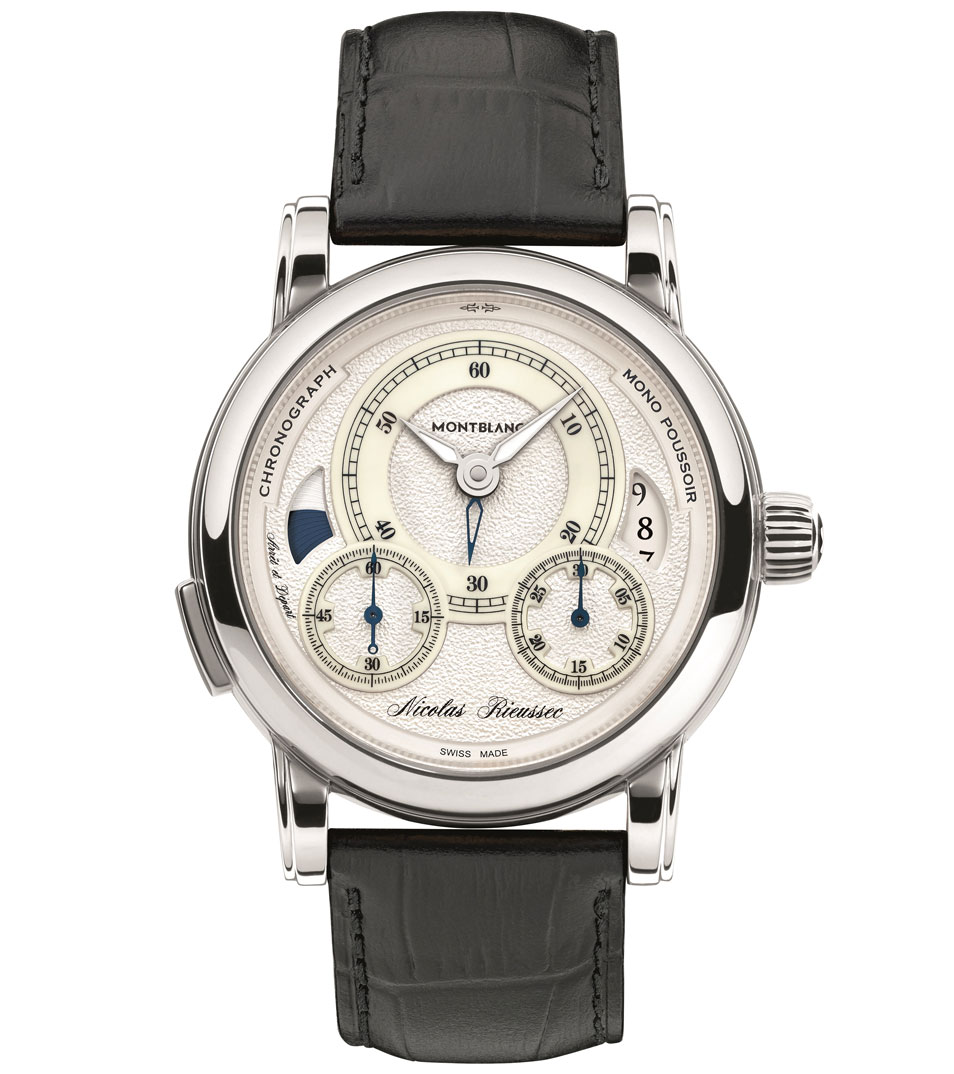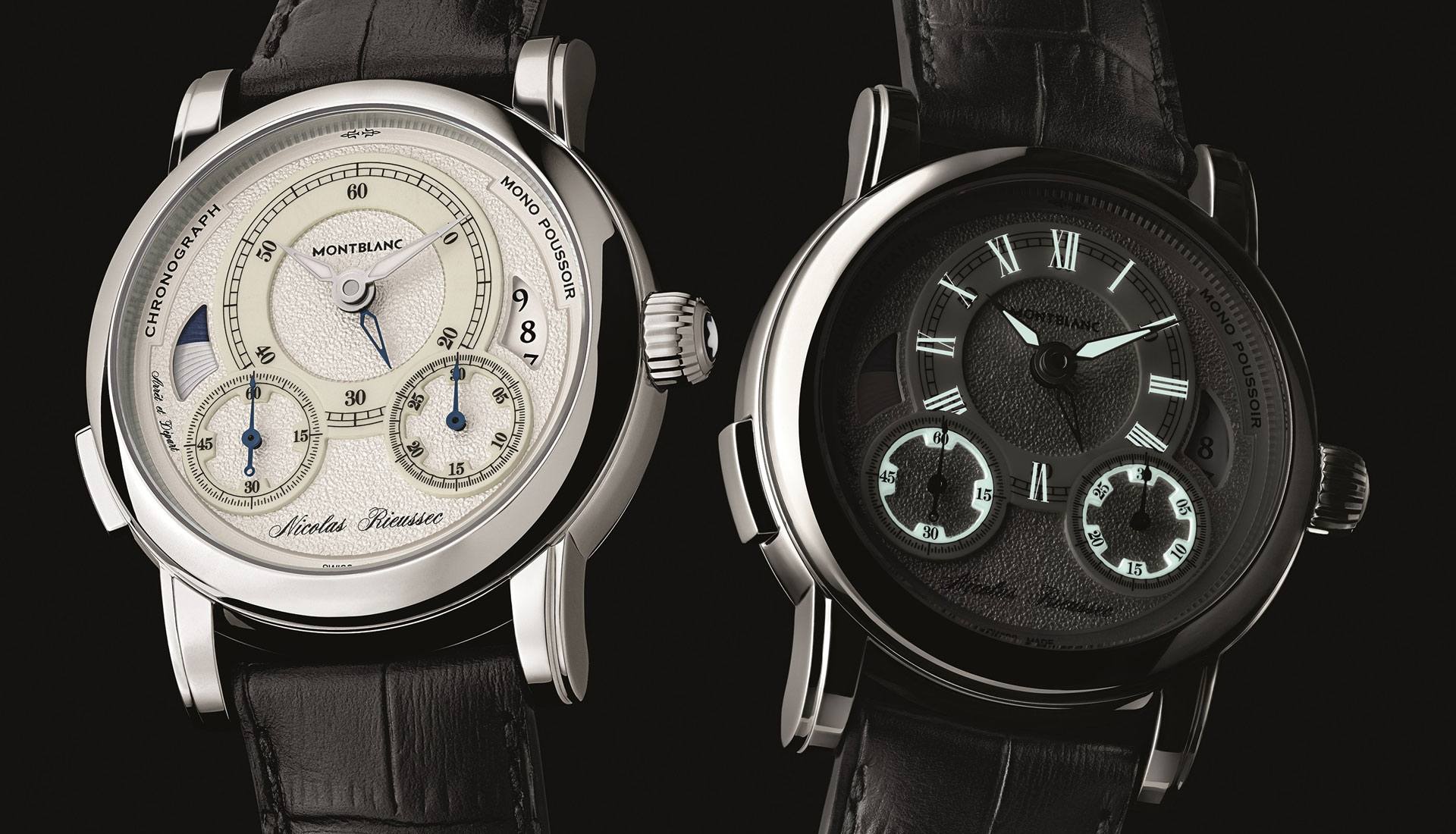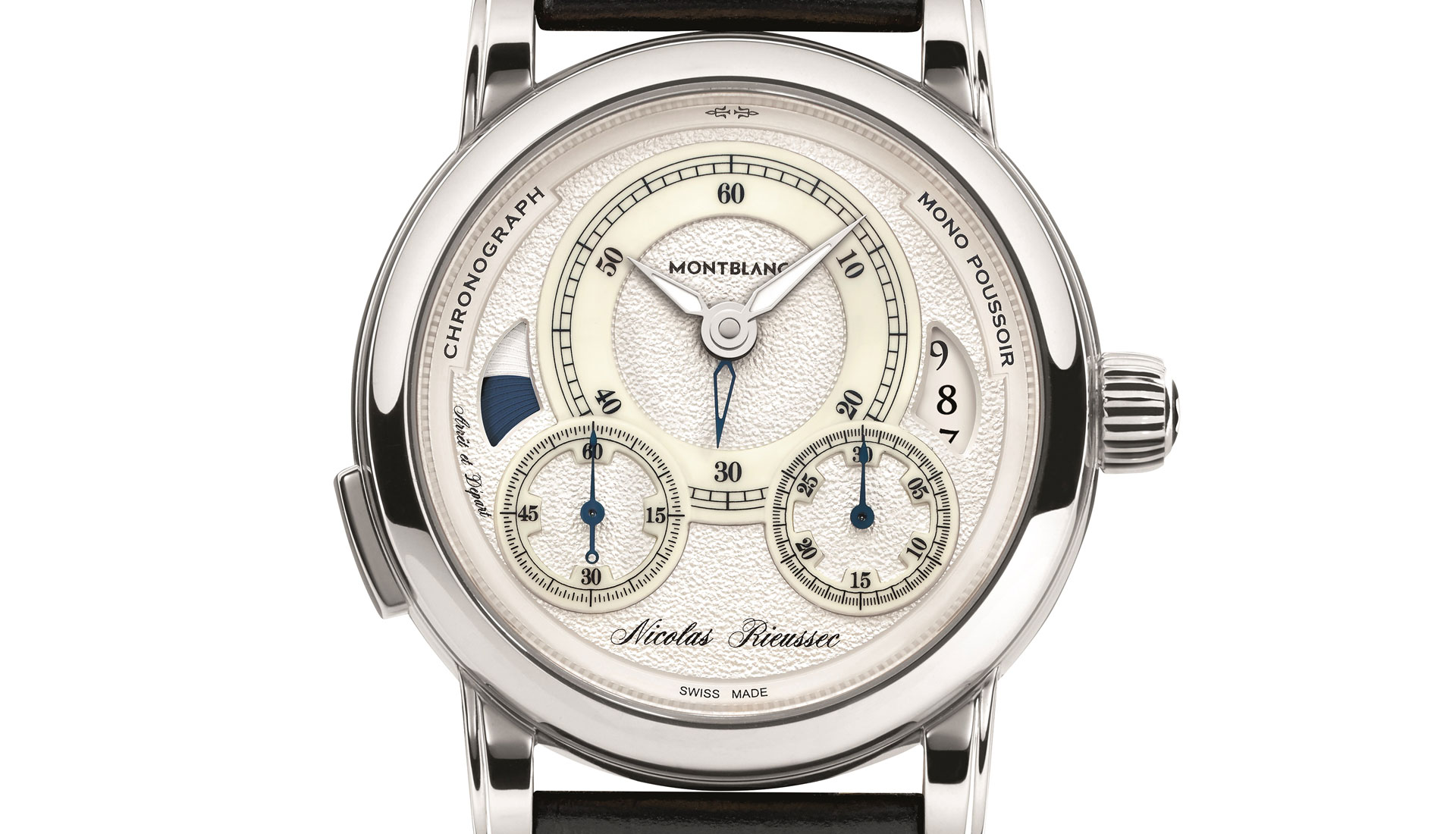Writing the History of the Measurement of Short Time Intervals – a new interpretation of Nicolas Rieussec’s 1825 ink-trace chronograph

Characteristics of a New Method for Recording Time
In order to ensure the accuracy of the measurements of short time periods while remaining faithful to the method of indication used in the second chronograph perfected by Nicolas Rieussec in 1825, the rotating counters indicating the seconds and the recording of 30-minute time periods, hitherto located respectively on the left and right of the dial in all models, are now for the first time replaced by slender chronograph hands. These will not, of course, deposit a drop of ink on the counters, but will be stopped in position by pressing the push-piece situated at 8 o’clock. The corresponding lever acts on the column-wheel, which in turn transmits the order via a vertical clutch to the wheels that carry, at the ends of the pivots, the hands pointing towards a railtrack circle with numerals resembling those appearing on the dial of the original chronograph.

In addition, the chronograph seconds hand situated on the left includes a counterpoise inspired by that found on the long hand of the original 1825 timepiece. In terms of the indications, for the hour ring and the graduation of the counters, Montblanc has opted, as in the case of the Homage to Nicolas Rieussec I chronograph, for an ultra-modern hybrid ceramic with the exclusive Montblanc Mysterious Super-LumiNova®, the clarity and brilliance of which is reminiscent of the enamel used in traditional dials. In daylight it displays a railtrack minute-circle similar to that found on the watches of the period, but in the dark its full potential is revealed.
In fact this ceramic incorporates pigments of Super-LumiNova® to trace out Roman numerals in a typographic style identical to that employed by Nicolas Rieussec for his 1825 chronograph. This mysterious display technique contributes an added element of magic that reinforces the impact of the dial with its surface displaying a grained appearance. This is inspired by the treatment used for the metal parts of the original timepiece and highlights the apertures with a delicate satin-finished background displaying the date at 3 o’clock and a delicate guilloché pattern displaying the day/night indication at 9 o’clock. A second time-zone indication is displayed by means of a skeleton hours hand.

